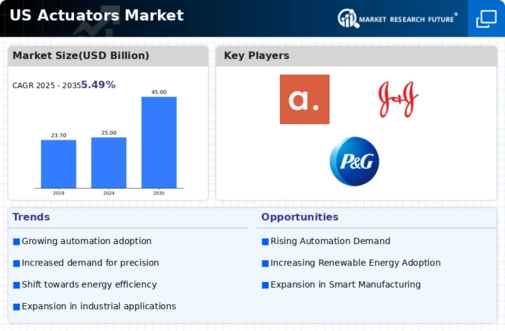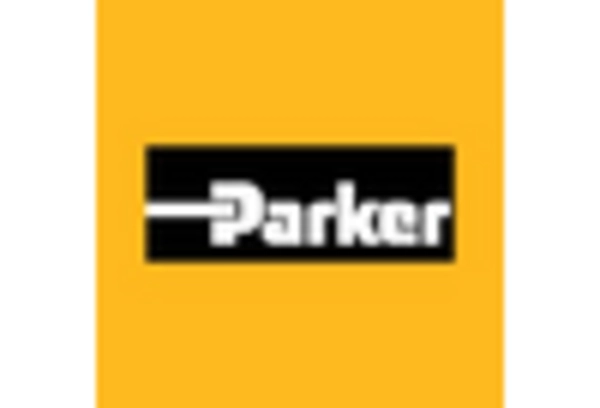Growth in Renewable Energy Sector
The expansion of the renewable energy sector significantly influences the actuators Market, as the need for efficient energy management systems becomes increasingly critical. Wind and solar energy installations require precise control mechanisms, where actuators are essential for optimizing performance. In 2025, investments in renewable energy in the US are expected to exceed $100 billion, creating substantial opportunities for actuator manufacturers. The integration of actuators in energy systems enhances the reliability and efficiency of energy generation and distribution. This growth in the renewable energy sector suggests a robust future for the actuators Market, driven by the demand for sustainable energy solutions.
Advancements in Robotics Technology
The actuators Market is poised for growth due to advancements in robotics technology, which increasingly relies on sophisticated actuators for enhanced functionality. As robotics applications expand in sectors such as manufacturing, healthcare, and logistics, the demand for high-performance actuators rises. In 2025, the robotics market in the US is expected to surpass $50 billion, with actuators being integral to the development of more capable and versatile robotic systems. This trend indicates that as robotics technology evolves, the actuators Market will likely benefit from increased demand for innovative actuator solutions.
Rising Demand for Smart Manufacturing
The actuators Market is experiencing a notable surge in demand driven by the increasing adoption of smart manufacturing practices across various industries. As manufacturers strive for enhanced efficiency and productivity, the integration of advanced actuators into automated systems becomes essential. In 2025, the market for smart manufacturing is projected to reach approximately $300 billion, with actuators playing a pivotal role in this transformation. The need for precision and reliability in manufacturing processes further propels the demand for high-performance actuators. This trend indicates a shift towards more intelligent systems, where actuators are integral to achieving operational excellence in the actuators Market.
Increased Focus on Industrial Automation
The actuators Market is significantly impacted by the growing emphasis on industrial automation across various sectors. As industries seek to improve operational efficiency and reduce labor costs, the implementation of automated systems becomes paramount. In 2025, the industrial automation market is projected to reach $200 billion in the US, with actuators being a critical component in these systems. The ability of actuators to provide precise control and responsiveness in automated processes enhances productivity and reduces downtime. This trend indicates a strong correlation between industrial automation and the actuators Market, suggesting a promising outlook for actuator manufacturers.
Regulatory Support for Automation and Efficiency
The actuators Market is positively influenced by regulatory support aimed at promoting automation and operational efficiency in various industries. Government initiatives and policies encouraging the adoption of advanced technologies are driving investments in automation solutions. In 2025, federal funding for automation projects is projected to reach $10 billion, creating a favorable environment for actuator manufacturers. This regulatory support not only fosters innovation but also enhances the competitiveness of US industries. As companies seek to comply with efficiency standards, the demand for actuators in automated systems is likely to increase, indicating a robust growth trajectory for the actuators Market.

















Leave a Comment